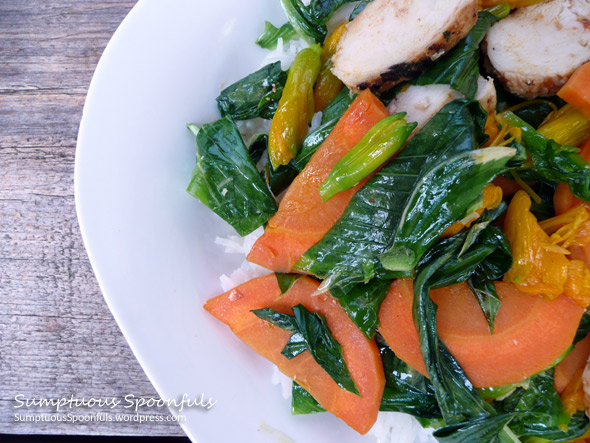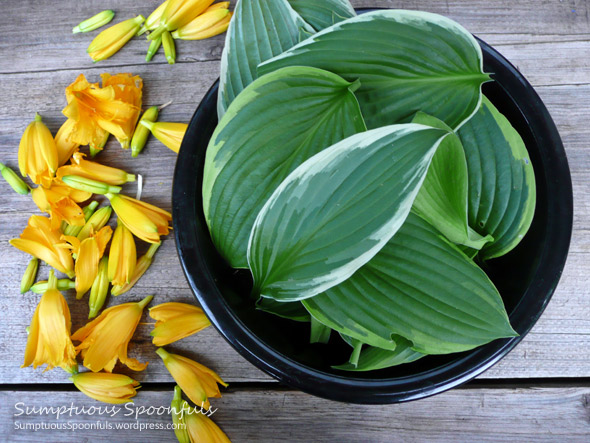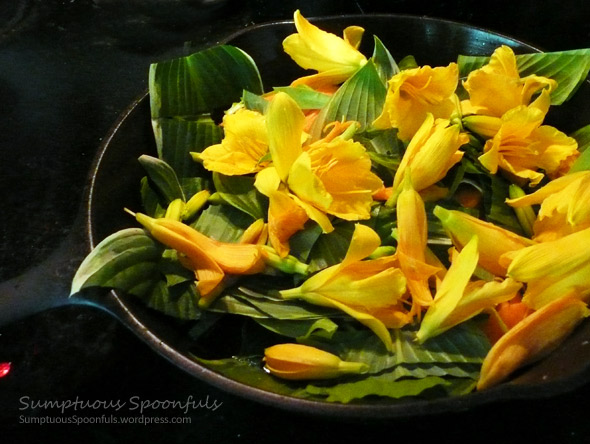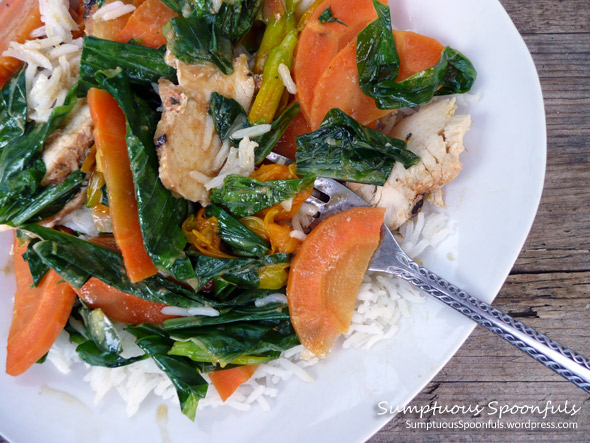
I have been fascinated with foraging since I was a little girl. My parents instilled this trait in me … I remember as a child, when we were driving along somewhere, my mother would sometimes suddenly exclaim that we needed to stop. And my dad would stop the car. We would just stop and pick asparagus out of the ditch … or wherever it was she discovered it. I remember her stopping to pick wildflowers sometimes too. We also went mushroom hunting, which is the ultimate in foraging, and if you have never gone, find yourself a friend who hunts mushrooms and tag along with them sometime. Mushroom hunting is great fun … you just have to know what you are looking for.
Back then I think foraging in general was much safer. The sprays that are used in parks, lawns, and ditches these days (in the US) can be pretty toxic. So you need to be more careful where you forage … but that doesn’t mean you shouldn’t forage. You can forage in your own yard, where you have control over what goes on your plants. And I totally think you should … I mean, what is better than free food that you picked fresh from the landscaping? (By the way, if the idea of foraging in your yard scares you, skip over to the recipe … I provided substitutes for the “foraged” parts of the meal.)
I used the word “landscaping” very intentionally there, because the foods I foraged for this dish are commonly used in landscaping in many yards in the city: hostas and day lilies. I long suspected that hostas are edible … because my deer love them … and whatever my deer love to eat, I start wondering about … so I went searching about the internet and I discovered that I was right! Ha! In fact, hostas are a common food in Japan, called Urui or Yuki-urui. Thanks to Miss Modish, I know this now. The day lily discovery I made the other day and I will point you to my Stella de Oro salad post to learn more about them. Do NOT try to eat just any old lily from your yard. Some lilies are poisonous. Make sure you are eating a DAY lily. Google “eating day lilies” if you aren’t sure of the difference and do some reading before you start picking. Also if you have food allergies, I would suggest eating a small bit first to make sure you are not allergic.

Notes on picking: for day lilies, pick the fresh buds, unopened pods and fresh (unwilted) flowers. It’s best to pick them fresh, right before you plan to eat them, but if you can’t eat them right away, put them in a plastic bag in your vegetable crisper. Day lilies only last a day, so if the flower looks “spent”, don’t bother trying to eat it. DO pick them off the plant, though, because the plant will produce more flowers that way. When picking hostas, choose the smaller, tender leaves in the center of the plant. The larger ones tend to be a little tough.
I had tried the day lilies raw and tasted the hosta leaves (yeah, they taste like a leaf), now it was time to discover how well they cook up … and it turns out they do cook up quite beautifully. Both of them. Together. With a little garlic and olive oil. Oh, and I threw in some carrots from my dad’s garden too. And just a splash of white wine.
What do they taste like? The day lily pods when cooked taste a bit like green beans. The flowers are slightly sweeter and more tender/wilty. The hostas taste sort of like spinach. (I tasted them after they were cooked and before I put the sauce on to get the “true” taste of the day lilies and hostas.)

A Forager’s Thai Peanut Chicken Stirfry
This was enough for little old me for a big, hearty lunch. Pick more for multiple people!
- 1 1/2 teaspoons olive oil
- Half of a very large carrot, peeled and thinly sliced and cut in half-moon shapes (or 1-2 regular sized carrots)
- 4 cloves of garlic
- A small mixing bowlful of small, tender hosta leaves, chopped (they cook down like spinach does, so you’ll want quite a lot) … if you don’t have hostas, substitute some spinach or bok choy
- Several handfuls of day lily pods and blossoms (see picture for amount … I’m not quite sure how many there were) … if you don’t have day lilies, substitute green beans
- A splash of white wine
- 1 cooked chicken breast, sliced or chopped
- 2 -3 Tablespoons of Super Simple Thai Peanut Sauce (recipe here)
- Hot cooked Basmati rice (to serve the lovely stirfry upon)
- Chopped peanuts and cilantro for garnish, if desired (I had no cilantro and totally forgot about the peanuts … not that it NEEDS garnish because the dish is so beautiful already!)
Heat a frying pan to medium heat and add the olive oil, swirling around to coat the pan. Add the carrots, garlic, hosta leaves (or spinach), and day lilies (or green beans) and sautee for a few minutes. Throw in a splash of white wine and the chicken and cook until the carrots are crisp tender, the hosta leaves are wilted and the chicken is hot. Stir in the peanut sauce and served over the hot rice. Garnish with chopped peanuts and cilantro leaves, if desired, or a fresh (uncooked) day lily flower would be a beautiful garnish.

This recipe was shared at Weekend Potluck.

2 comments
ann, this looks gorgeous! this whole foraging things sounds so interesting; i’m fascinated. i’m not from a family who ever spent any time foraging, so it’s been fun to read about quite a few of my blogger friends’ adventures this spring and summer. i suppose i knew one could forage; i just never thought about actually doing it. this year with the garden, it’s been strange even going out to something which is supposed to bear fruit and plucking things to eat, even though they’re supposed to be there. 🙂
i have huge hostas; i never thought about using their leaves to eat, but i will now. and i may have to go find some lillies…
It is funny how conditioned we are to think that food has to cost money in our society. Foraging and gardening is a more natural state of being, I think … like you are in harmony with nature.